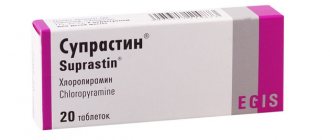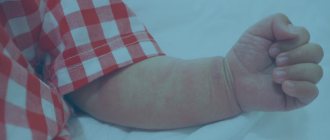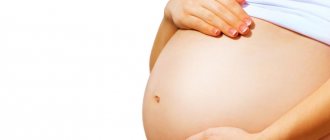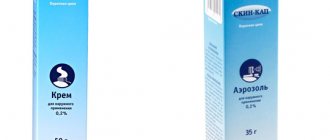Causes
Neurodermatitis in children is a pathological reaction of the skin to a variety of provoking factors. The disease develops due to disturbances in the functioning of the immune system and is often combined with other similar pathologies: atopic dermatitis, severe allergies and bronchial asthma.
The causes of neurodermatitis in children are varied. According to some scientists, the disease begins to form during intrauterine development, when all organs, including the immune system, are formed. Moreover, the causes of neurodermatitis in children may be associated with any impact on the fetus during pregnancy. They contribute to the formation of prerequisites for the development of the disease.
In the general understanding, the cause of neurodermatitis in children is still unformed immunity, in which the child’s body is not able to withstand adverse environmental factors. Heredity plays an important role here. If close relatives have had dermatological diseases, then the child is likely to develop it.
Other probable causes of neurodermatitis:
- poor nutrition;
- previous infections;
- helminthic infestations
- intoxication of the body;
- exposure to allergens;
- severe stress;
- pathologies of internal organs, in particular the kidneys and liver.
Allergenic factors include:
- household mites;
- animal fluff and hair;
- some food products;
- chemical aerosols;
- medications;
- synthetic materials;
- plant pollen.
The psychosomatics of neurodermatitis in a child plays a special role. In this case, rashes occur against the background of disturbances in the functioning of the nervous system. Because of this, he becomes withdrawn and nervous. Many children with this diagnosis have difficulty communicating with others.
Psychosomatics of neurodermatitis in a child may be due to lack of attention from the mother. Also, since the skin is the border separating a person from the world, skin diseases can occur when contact with it is disrupted. This is a kind of way to escape from the outside world, to distance yourself from it. Children with increased susceptibility to criticism, who are guided by the opinions of others and who are ashamed of their appearance are prone to neurodermatitis.
Problems in the treatment of atopic dermatitis in infants
Atopic dermatitis (AD) is a skin disease that usually occurs in early childhood in individuals with a hereditary predisposition to atopy and tends to have a chronic, relapsing course [1].
A hereditary predisposition is supported by numerous data on the high frequency of familial cases of the disease. In 60–75% of cases, atopic diseases are detected in families of children with AD, such as bronchial asthma, allergic rhinitis, neurodermatitis, etc. [1, 2, 3, 4]. It should be noted that in approximately 10% of patients it is not possible to establish the allergic nature of AD, and the mechanisms of development of this form of the disease remain unclear [5, 6, 7].
During the first two years of life, we observed children with a high risk of developing atopy [8]. All mothers of these children suffered from bronchial asthma or a combination of bronchial asthma with another atopic disease. 19.4% of fathers also had atopic diseases, and 8.3% of them suffered from AD. More than half of the older brothers and sisters of our patients (53.8%) also had diseases of an atopic nature, with AD in 23% of cases. Finally, 24.3% of 252 close and distant relatives had atopic diseases, and AD was noted in 10.4% of cases.
AD developed in the children we observed in more than half of the cases (58.3%). Another 16.7% of children were diagnosed with dermatorespiratory syndrome. Thus, atopic dermatitis in its “pure form” or in combination with broncho-obstructive syndrome was registered in 75% of children with a family history of atopy.
| Figure 1. Dynamics of incidence of atopic dermatitis |
Figures 1, 2 show the dynamics of identifying clinical manifestations of AD and dermatorespiratory syndrome in the children we observed with a family history. It is characteristic that in the vast majority of observations, AD clinically manifested itself in the first year of life, i.e., in infancy. By 6 months, 47.2% of children suffered from AD, by 12 months - 55.6% of all children; in the second year of life, the disease was clinically manifested in only 2.7% of children.
| Figure 2. Dynamics of incidence of atopic dermatitis and dermorespiratory syndrome |
By the end of the second year of life, almost half of the children with AD experienced remission of clinical manifestations, and with dermatorespiratory syndrome, remission by the end of the second year of life was recorded in 2/3 of cases.
From the above data it is clear that the maximum frequency of clinical manifestations of AD reaches in the first 6 months of life, and the first signs of the disease are detected mainly from 8 to 12 weeks of life. Infancy, therefore, is the main “springboard” for the development of this pathology. Typically, the disease begins with erythematous and erythematous-squamous lesions of the facial skin in the form of a “milky crust.” After 1–2 weeks, itching and general dryness of the skin, especially the outer surfaces, appear.
And after another 1–3 weeks, the process can spread to the skin of the arms, thighs and legs. A change in the sequence of rashes and the appearance of primary elements at the beginning of the disease on the body and then on the face or on the body and on the face at the same time is rarely observed. But, as a rule, this sign is considered more unfavorable prognostically: it is in this group of infants that atopic dermatitis takes on a widespread and severe nature of skin lesions. By the beginning of the second year of life, the evolution of rashes is usually observed in the form of the gradual formation of lichenification syndrome with maximum localization in the folds of the joints of the limbs and on the neck.
It is characteristic that in children with a history of atopy, symptoms of AD appeared not only quite early (6–8 weeks of life), but, as a rule, also arose during breastfeeding, since more than 70% of the children we observed received it during this period. period of life breast milk. Having carefully analyzed the nature and quality of feeding, we noted that while breastfeeding, more than 30% of mothers introduced fruit juices, purees and other complementary foods into their children’s diets in order to “vitaminize the diet.” However, no statistically significant differences in the quality of nutrition in relation to the control group (children without heredity burdened with atopy) were detected. Moreover, a significant proportion of mothers practiced predominantly breastfeeding.
Thus, our observations showed that in children at high risk for the development of AD, one of the serious problems is the early clinical manifestation of the disease, which develops in most cases during breastfeeding.
It should be noted that in practice, the diagnosis of AD in the vast majority of cases is established clinically, since in infancy a physiologically higher level of JgE is noted than in all subsequent periods of life. Thus, a study of the JgE level over time during the first 24 months of life showed that in the group at risk for the development of atopy, the JgE level was clearly higher than in the control group. But in the control group this indicator was increased, and the identified criteria in general did not have statistically and diagnostically significant differences. It should be noted that among children in whom atopic dermatitis or dermatorespiratory syndrome was clinically identified in the first two years of life, the level of JgE was the highest and had a statistically significant difference with the control group. This figure was even higher than that of children also born to mothers suffering from bronchial asthma, but who did not have clinical manifestations of atopic disease in the first two years of life. This is consistent with the position about the JgE-mediated genesis of AD with a genetically determined predisposition to atopy, but, unfortunately, does not provide a reliable laboratory criterion for diagnosing AD in children of the first years of life.
| Figure 3. Erythematous skin lesions due to candidiasis |
The most common diagnostic error is when cutaneous candidiasis in infants is mistaken for manifestations of AD. Candidiasis is one of the most common infectious skin diseases; its prevalence among infants can reach 10–24% [9]. The first distinguishing feature of candidiasis is its earlier onset, usually in the 2nd or 3rd week of life. The second is the predominance of erythematous skin lesions. It can manifest itself as intertriginous dermatitis, which is localized in large folds and is characterized by the presence of erythematous, edematous areas with small blisters and pustules along the periphery (Fig. 3). This form of candidiasis is often mistaken for diaper rash. Unlike diaper rash, erosive surfaces have clearly contoured, scalloped edges with an undermined epidermal rim. The surface of the erosions is smooth, shiny, and tense. Another variant of the lesion is candidiasis diaper dermatitis. It usually develops in children who carry Candida fungi in their intestines. The disease manifests itself as erythematous plaques with a fringed border and a clearly defined edge. They are formed by the fusion of numerous papules and vesicles. Satellite pustules located on the surrounding skin represent foci of localized candidal infection. Typically, the process involves the skin of the perianal area, inguinal folds, perineum and lower abdominal wall (Fig. 4). In boys, the skin of the scrotum and penis may be affected. The third variant of cutaneous candidiasis is a vesicular and erythematous lesion of smooth skin, which is characterized by a predominance of moist, erosive, smooth, tense, shiny areas of a dark red color (erythematous lesion) or the presence of a significant number of small flabby blisters (vesicular form). Thus, the features of candidiasis are a dark red color and varnish shine, a moist rather than weeping surface, distinct boundaries and scalloped outlines; a narrow peripheral border, represented by a collar of thin white, macerated stratum corneum of the epidermis; the presence of fresh blisters, pustules and small erosions around the main large erosions.
| Figure 4. Candidal diaper dermatitis |
The third distinguishing feature is the absence of dry skin and the absence of itching, even with widespread skin lesions.
On the other hand, blood pressure itself is often complicated by the addition of an infectious process. Moreover, most often infectious complications are caused by staphylococci, especially St. aureus, Candida fungi, herpes simplex virus. It is characteristic that the process of infection is aggravated by pathophysiological disorders that underlie the pathogenesis of AD and are currently classified as superantigens that enhance and prolong the allergic reaction. Therefore, in diagnostically difficult cases, it is advisable to conduct an appropriate additional examination: culture of the discharge (if any) or a skin smear on Endo medium and Sabouraud medium (selective medium for fungi) and a smear for polymerase chain reaction for the herpes virus.
Treatment of blood pressure in infancy is one of the most difficult and thankless tasks for a pediatrician. Since the clinical debut of AD in most cases occurs during breastfeeding, many specialists - nutritionists, pediatricians and allergists recommend prescribing mothers a strict elimination diet with a restriction of not only highly allergenic foods, such as chocolate, strawberries, citrus fruits, etc., but also sugar, salt, whole milk, fatty, smoked, spicy, etc. It often comes to the point that a nursing woman is prescribed a diet that is extremely poor not only in microelements and vitamins, but also in basic nutrients - proteins, fats and carbohydrates. This, naturally, is reflected in the composition of breast milk, which loses its main purpose - to provide the growing child’s body with everything necessary for normal growth and development [11]. At the same time, numerous studies in recent years have shown that there is no clear relationship between the mother’s elimination diet and the severity of blood pressure, so there is no need to keep the mother “on a starvation diet.”
The diet of a nursing woman during the development of hypertension in a child should remain complete and varied, with slight restrictions on basic foods (Table 1). The only exceptions are highly allergenic products that are obligate allergens - chocolate, cocoa, natural coffee, nuts, honey, citrus fruits, red caviar. They should not be used. It is also necessary to avoid excess consumption of sugar, candy and other sweets, as this increases the sugar content in breast milk. Onions, garlic, radishes, radishes, spices, hot seasonings, as well as strong broths - meat, fish, chicken and mushroom - can change the taste of breast milk, so they are introduced into the diet of any nursing woman in limited quantities. At the same time, breastfeeding women can be recommended to include special products in their diet: instant milk drinks “Femilak” (Russia), “Enfa-Mama” (USA), “Dumil Mama Plus” (Denmark), etc., which help enrich breastfeeding milk with vitamins and micronutrients. These drinks are used both separately and for preparing various dishes. The number of drinks is set individually, taking into account the nature of the woman’s diet and health status, and is usually 1–2 servings (200–500 ml) per day.
If blood pressure develops in a child who is on artificial or mixed feeding, especially when a food allergy to cow's milk proteins is established, it is advisable to transfer the baby to therapeutic nutrition. In this case, at least three options are possible: the use of mixtures based on a high degree of hydrolysis of cow's milk proteins; the use of soy-based formulas and the use of milk from other animals or formulas prepared from the milk of other animals. Each of these options has its own advantages and disadvantages. However, they have one common drawback - none of the mixtures serves as an adequate replacement for breastfeeding in terms of its protective, biological and social properties.
Over the past decades, formulas based on soy protein have been widely used for therapeutic purposes in children with intolerance to cow's milk proteins. There are quite a few such mixtures: Alsooy (Nestlé, Switzerland), Bona-soya (Kymos, Finland), Vaisoya (White Laboratories, Great Britain), Nutrilak-soy (Russia), Nutrisoya (Nutricia, Holland), Similak-isomil (Abbott Laboratories, USA), SMA Nurse (Weit Lederle, USA), Soy Semp (Semper, Sweden), Frisosoy (Friesland, Holland), Humana LP (Humana, Germany), Heinz-soy mixture (Heinz, USA), Enfamil-soy (Mid Johnson, USA) and others.
The protein substrate of these products is represented by soy protein isolate. However, it is devoid of components such as a trypsin inhibitor. Soy mixtures do not contain difficult-to-digest carbohydrates (raffinose and stachyose), which are contained in soybeans and cause flatulence and diarrhea in children. The fatty component of the mixtures is formed by vegetable oils (sunflower, soybean, coconut, corn, rapeseed, etc.), providing an optimal ratio of polyunsaturated fatty acids. The carbohydrate component is often represented by dextrin-maltose, which has a beneficial effect on the intestinal microbial landscape. In individual mixtures, the carbohydrate component can also be represented by glucose, sucrose or fructose in various proportions. All soy mixtures are lactose-free, so they are used not only for cow’s milk protein intolerance, but also for therapeutic nutrition of children with lactase deficiency, alactasia and galactosemia. Soy-based mixtures are enriched with vitamins, minerals, microelements, taurine, i.e. they are maximally adapted for nutrition of children in the first year of life.
An undesirable effect of soy-based formulas is the appearance of a tendency to constipation in children and an allergy to soy proteins that has been growing in recent years.
The most radical therapeutic effect for intolerance to cow's milk proteins is provided by milk-based artificial feeding products with a high degree of protein hydrolysis. These include such mixtures as Alfare (Nestlé, Switzerland), Nutramigen and Pregestimil (Mead Johnson, USA), Pepti-Junior (Nutrizia, Holland).
There are also hypoallergenic mixtures such as Humana GA 1, Humana GA 2 (Humana, Germany), HIPP GA (Hipp, Austria), Frisopep (Friesland, Holland), which are characterized by a low degree of hydrolysis of cow's milk proteins. Indications for the use of mixtures with high and low degrees of hydrolysis are different:
- hypoallergenic mixtures with a high degree of hydrolysis are used only for therapeutic purposes if the child has an allergy to milk and soy proteins or a polyvalent food allergy;
- hypoallergenic mixtures with a low degree of hydrolysis are not therapeutic and are prescribed to prevent food allergies to cow's milk proteins in children at risk for the development of this pathology, namely: babies with prolonged diarrhea of infectious and non-infectious origin, children with a history of allergies, very premature babies.
The milk base of these mixtures is subjected to enzymatic hydrolysis, which can significantly reduce the antigenic potential of the protein component. Moreover, the higher the degree of hydrolysis and the smaller the size of the peptides obtained as a result of hydrolysis, the lower the antigenic potential of the protein component of the mixture. Various protein sources are used as protein substrates: casein and whey proteins, meat proteins, bovine collagen, etc. Special technologies (processing with adsorbents) provide for their purification from undesirable hydrolysis products. These medicinal mixtures also include vegetable oils, medium chain triglycerides, glucose polymers, a vitamin and mineral complex, and taurine. The amino acid composition of such mixtures is close to that of human milk.
These mixtures have very low antigenic properties, are easily absorbed by the body of a child of the first year of life, and do not require strain on the enzymatic and juice-excreting functions of his gastrointestinal tract. The inclusion of glucose polymers (modified starches) helps reduce osmolarity and also stimulates the growth of normal microflora in the intestine.
A negative feature of medicinal mixtures with a high degree of protein hydrolysis is their unsatisfactory organoleptic properties. The formulas have the smell and taste of burnt or rancid milk, and children get used to them with great difficulty, even in the first days of life. Great patience and sometimes ingenuity are required (even including the introduction of various fruit, vegetable and other additives) on the part of parents and medical personnel in order to accustom the child to this food product.
Finally, there is, as already mentioned, a third option. You can try to replace cow's milk in the child's diet with the milk of other animals (goat, mare, camel). But it must be remembered that this will be an inferior replacement (unadapted nutrition), which, with a large volume and/or long-term use, will inevitably lead to the negative consequences inherent in the use of unadapted mixtures (overload of proteins, fats, diapedetic gastrointestinal bleeding). It should be noted that currently there are attempts to create an adapted mixture based on goat milk (Nannie, New Zealand).
Unfortunately, with genetically determined blood pressure in infants, diet therapy has a very limited effect. It is much more effective for blood pressure associated with food allergies. In this case, diet therapy is decisive.
Systemic therapy for blood pressure in infants is extremely difficult due to age restrictions imposed on the use of most antiallergic drugs. Only some first generation antihistamines are approved for use in children of the first year of life. These are diphenhydramine, suprastin, fenistil, pipolfen and ketotifen (Table 2). Their purpose is indicated for severe itching in a child. In this case, you should pay attention to two features of first generation antihistamines. Firstly, all first generation drugs are prescribed for a limited period of time - no more than 7-10 days, since after the 7-8th day their pharmacological effect begins to decline. Secondly, in early childhood this group of drugs can cause a paradoxical reaction - agitation, sleep disturbance, anxiety. A paradoxical reaction is especially common when using diphenhydramine (diphenhydramine). The occurrence of such a reaction is a reason to discontinue the drugs.
| Table 2. Antihistamines approved for use in infants |
Thus, the main place in the treatment of blood pressure in infants is occupied by local treatment, which is aimed at reducing dryness and itching of the skin and local anti-inflammatory effects.
Reducing dryness, which also helps in part to relieve itching, is achieved through the widespread use of moisturizers and emollients. For this purpose, first of all, daily baths with a water temperature not exceeding 36 ° C are recommended, while the use of soap, washing gels and foams is excluded.
The procedure for taking a hygienic bath in children with AD should be carried out no more than once every 10 days, and it is necessary to use special soaps, for example, lipid-enriched “soap with cold cream”, soap with a neutral pH reaction. Regular toilet soap, "Children's" soap and others can significantly increase dry skin.
In addition to daily baths, you should additionally irrigate your child’s skin during the day using thermal water sprays. The appearance of weeping does not exclude irrigating the skin and even bathing. However, in these cases, after bathing, additional treatment of the areas where weeping has occurred is necessary with lotions and wet-dry dressings.
If there is no weeping, immediately after the bath it is necessary to treat the child’s skin with softening medicinal creams, for example Mustela cream, which is recommended for use from the newborn period, or Atoderm.
In the first days of AD therapy, it is necessary to treat the child’s skin with an emollient cream many times, up to 5–10 times. It is advisable to combine these procedures with irrigation of the skin and subsequent blotting with a soft diaper or napkin, as well as applying an emollient cream.
The second direction of local therapy is the prescription of anti-inflammatory drugs. For a long time, local remedies prepared on the basis of naphthalan, tar, ASD III fraction, etc. were used in the treatment of infants. These drugs have low effectiveness and in most cases are non-standardized drugs. A big step forward has been the emergence in recent years of a new non-steroidal anti-inflammatory drug - pimecrolimus (calcineurin inhibitor) in the form of 1% Elidel cream. The use of this non-steroidal drug is approved with
3 months of age. Therefore, it is no coincidence that local therapy for blood pressure is currently structured as follows [7]:
- at the first manifestations of dermatitis, intensive hydration and softening of the skin is recommended, as described above;
- as the process progresses, if there is no weeping, along with caring for the child’s skin, treatment of the affected areas with Elidel cream is prescribed;
- Only if there is no effect from the use of Elidel cream, external glucocorticosteroids are introduced into therapy.
It should be noted that the administration of external glucocorticosteroids to infants also has a number of features: firstly, non-fluorinated drugs are used; secondly, restrictions are imposed on the dosage of drugs (Table 3). This has made it possible to significantly increase the safety of modern external glucocorticosteroids and to use them for a long time, necessary for the complete disappearance of skin manifestations of AD.
It is also impossible not to note the improvement of external therapy for AD in infancy: the widespread use of moisturizing and softening the skin as the basis of therapy; timely (early) introduction into the blood pressure treatment regimen of the non-steroidal drug 1% Elidel cream, which inhibits the development of blood pressure symptoms and significantly reduces the need for the use of glucocorticosteroid drugs in infants.
G. A. Samsygina, Doctor of Medical Sciences, Professor of Russian State Medical University, Moscow
For questions regarding literature, please contact the editor.
Clinical options
Neurodermatitis in children can occur in several clinical forms. They differ in the localization of the rashes, as well as the treatment regimen. Another difference lies in the severity of the signs, which depends on several conditions, including the age and characteristics of the child’s physical development.
There are the following clinical variants of the course of neurodermatitis:
- local. Also called limited, which indicates the nature of the rash. They appear in one area of the body, or less often in two adjacent areas. Moreover, the rash can be observed almost everywhere: on the face, back, arms or legs, etc.;
- linear. With this form of neurodermatitis, the rashes are localized mainly on the arms or legs;
- diffuse. Unlike local, this variant of the flow is accompanied by the appearance of spots on different parts of the body at the same time;
- hypertrophic. It has another name - Ehrmann's neurodermatitis. The form of the pathology is quite rare, accompanied by foci of inflammation in the area of the inguinal-femoral folds and the inner surface of the thighs;
- psoriasiform. The rashes are represented by compacted areas of skin with elements of peeling. They appear on the face, scalp and neck;
- follicular. Rashes occur in the scalp area. Papules are characterized by a pointed shape. They are localized along the mouths of the hair follicles.
What diseases need to be distinguished from?
There are several diseases that are accompanied by a rash and weeping elements on the skin. In particular, these include various types of eczema, in which blisters also appear on the skin, and then erosions; the difference is that with eczema, the erosions are deeper, and crusts form in their place.
Psoriasis, accompanied by severe itching and noticeable changes on the skin, but the rashes have a slightly different appearance, which is their distinguishing feature. The first manifestations of psoriasis can occur in early childhood, but more often the disease debuts in adolescents.
Another disease accompanied by rashes is chickenpox. You can see a photo of a chickenpox rash in a similar article on our website.
Symptoms
In most cases, the first symptoms of the disease appear at the age of 2 years. The most typical form of neurodermatitis is diffuse. It is often accompanied by allergic rhinitis and hay fever, i.e. congestion and severe nasal discharge. In the diffuse form of the disease, small pale pink spots appear, which then merge and form continuous zones of infiltration. The most common rash occurs:
- on the face;
- on the neck;
- on the bends of the limbs;
- in the groin area.
Foci of hyperpigmentation form along the perimeter of the rash. The skin itself at the site of inflammation thickens, and the skin pattern on it becomes more pronounced. The rashes have no clear boundaries. The contours can only be distinguished by the flaking scales.
In general, neurodermatitis in children causes the following symptoms:
- red spots of different shapes and diameters. The outline of the rashes is uneven, and their color differs significantly from healthy skin. In some cases, the rash consists of blisters with serous fluid inside;
- severe itching. The rash causes the child to constantly itch. Often the itching is unbearable. Because of this, the child’s general well-being worsens; he constantly scratches the skin until wounds appear, which can fester in the future;
- behavior change. Due to the feeling of discomfort against the background of itching, the child becomes restless, his appetite is disrupted, and problems with sleep appear. Sometimes this may cause headaches and fever;
- severe dry skin. Peeling of the skin is most pronounced in the area where spots appear. In the case of the follicular form of the disease, dry skin leads to dandruff.
Prognosis and possible complications of neurodermatitis in children
The prognosis of the disease greatly depends on the age at which the disease was detected and how effective the treatment measures were.
Neurodermatitis in early childhood, which occurs due to the immaturity of the child’s body, is treated quite easily - it is necessary to provide the baby with proper nutrition, later introduction of complementary foods, and hypoallergenic living conditions. Treatment with systemic drugs is extremely rarely required. With age, the child’s immune system matures and stops responding to the allergen.
If the disease manifests itself at a later age or does not receive sufficient treatment, then it is likely to become chronic, and treatment measures will have to be taken throughout life.
Among the most common complications of neurodermatitis, inflammatory skin diseases should be mentioned - scratching contributes to the introduction of bacterial and fungal infections into the affected area, and skin affected by neurodermatitis is an excellent entry point for infection. Skin atrophy over a long period of time can take quite severe forms.
When to see a doctor
Neurodermatitis in children is a chronic disease characterized by periods of exacerbation and remission. In most cases, it is impossible to recover from it completely, especially on your own. You can only achieve long-term remission, but for this the child must always be observed by a doctor and receive appropriate treatment.
Symptoms and treatment of neurodermatitis in children are the responsibility of a pediatric dermatologist and allergist. You can make an appointment with any of the specialists with us, at JSC “Medicine” (clinic of Academician Roitberg), located in the center of Moscow. The clinic employs experienced specialists and has all the necessary equipment for correct diagnosis.
Diet
Compliance with diet is the most important condition for effective treatment.
Neurodermatitis in children is difficult to treat, but skin manifestations are easily and quickly relieved when removed from the diet:
- Sahara;
- confectionery products;
- chocolate;
- honey;
- citrus fruits;
- strawberries;
- nightshade vegetables;
- carbonated sweet drinks and fast food;
- products containing food additives.
It is important not only to exclude characteristic allergens, but also to identify individual reactions to a particular product.
To do this, it is excluded from the menu for a while, and then introduced and the body’s response is monitored. Contact us!
The Moscow PsorMac Center offers treatment for neurodermatitis in children using proprietary methods using specially developed local skin therapy preparations. Our specialists will not only prescribe a course of medications that are safe from the point of view of side effects, but will also advise on lifestyle and nutrition correction and help you choose an effective treatment regimen. Patient reviews and visual results of treatment can be found in special sections of the website. Make an appointment for your first appointment by calling +7,.
Diagnostics
Treatment of neurodermatitis in children begins only after diagnosis, since this pathology is in many ways similar to other skin diseases. In this regard, additional research is required.
Neurodermatitis is a so-called pathology of exclusion. It does not have specific laboratory and instrumental markers. Therefore, the diagnosis of “neurodermatitis” is made only when the child does not have other skin diseases.
Basic diagnostic methods:
- blood test for eosinophil content;
- general blood analysis;
- allergy tests;
- Ultrasound of the skin and subcutaneous layer;
- scraping from the source of inflammation.
Criteria for diagnosing neurodermatitis:
- typical localization of rashes;
- intense itching and scratching of the skin;
- the child’s characteristic withdrawn and shy behavior;
- relapsing chronic course;
- dry skin;
- the presence of concomitant allergic diseases: bronchial asthma, allergic rhinitis, etc.;
- hereditary burden of atopic pathologies.
Content
- Causes of food allergies Products that most often cause allergies
- Drug therapy
A food allergy is an increased sensitivity of a child’s body to any harmless food or ingredient.
In most cases, the cause of allergies is heredity. But at the same time, parents may be allergic to some foods, and the child may be allergic to others.
Allergies occur when the body produces antibodies to dietary proteins found in certain foods. An acute reaction can be life-threatening. However, most manifestations are mild. There are three most “allergic” food groups:
- Milk. This is the most common cause of food allergies in young children. Out of 100 children, every second or third cannot tolerate cow's milk. However, by age 4, 95% outgrow this intolerance. Source: R. F. Khakimova On the issue of food allergies in children Practical Medicine, May 2009, 3(35)
- Chicken egg white, crustaceans, nuts. They are in second place among the causative agents of allergies. Usually the disease does not disappear with age, but remains for life.
- Peanut. The most famous allergen. Peanuts are not a nut, but a legume, so often children who react to them do not have a negative response to cashews, almonds, etc.
Treatment
Treatment of neurodermatitis in children is a rather long and complex process. The therapy is comprehensive and affects all areas of the child’s life. He is prescribed medication, physical therapy, and a special diet. Symptoms and treatment of neurodermatitis in children are directly related. Drugs are selected taking into account age, general health and signs that are observed in the child.
The main group of drugs used are antihistamines. The dosage, frequency and duration of use are determined by the doctor.
In most cases, they are used during periods of exacerbation, when the child suffers from severe itching. Taking such drugs helps improve a person's general condition. In some cases, antihistamines are prescribed as prophylaxis before possible seasonal exacerbations.
Since the psychosomatics of neurodermatitis in a child can play a decisive role in the development of the disease, he may be prescribed sedatives to relieve anxiety and irritation. In severe cases of the disease, they resort to hormonal drugs - corticosteroids. But they can only be taken as prescribed by a doctor. Locally, soothing, cooling ointments with anti-inflammatory and healing effects are used to treat inflammation.
Diet
The second direction of treatment of neurodermatitis in children is diet therapy. The child must be prescribed a hypoallergenic diet with the exclusion of possible allergens. The following have high allergenic properties:
- citrus,
- chocolate;
- seafood;
- Exotic fruits;
- honey and other bee products.
It is very important for infants to establish breastfeeding, since mother's milk contains all the nutrients the baby needs. At the same time, a nursing woman must also follow a hypoallergenic diet, since allergens enter the milk and are passed on to the baby. Breastfeeding is important because formula can also cause an allergic reaction leading to neurodermatitis.
Proper child care
It is equally important to create favorable conditions for the child:
- ensure proper sleep and proper exercise and rest regime;
- carry out hygiene procedures in a timely manner, at least 2 times a day;
- keep the child’s linen, toys and other belongings clean;
- carry out wet cleaning in the patient’s room every day;
- create a calm home environment that eliminates stress and anxiety that provoke an exacerbation of the disease.
How dangerous the disease is: possible complications
In children under one year old, allergies combined with vomiting and diarrhea lead to severe dehydration, which is extremely dangerous for babies. Anaphylactic shock, Quincke's edema, suffocation, and bronchospasm are also possible. All of these conditions are potentially fatal at any age.
Sources:
- R F. Khakimova. On the issue of food allergies in children // Practical Medicine, May 2009, 3(35)
- A.N. Pampura, O.V. Yudina, Yu.G. Mukhina, M.G. Ipatova. Achievements and problems in diagnosing food allergies in children // Difficult Patient, 2007, vol. 5, no. 10
- O.V. Trusova, I.V. Makarova, A.V. Kamaev, N.L. Lyashenko. Nutrition of children with food allergies // Pediatrician, 2022, v. 8, special issue
Grek Elena Anatolyevna Clinic
Author of the article
Grek Elena Anatolyevna
Doctor of the highest qualification category
Specialty: allergist
Experience: 24 years
The information in this article is provided for reference purposes and does not replace advice from a qualified professional. Don't self-medicate! At the first signs of illness, you should consult a doctor.
Prevention
The goal of preventing neurodermatitis is to eliminate or minimize the effects of factors that can trigger the onset or relapse of the disease. To do this, it is recommended to do the following:
- provide proper nutrition without allergens, but with sufficient vitamins;
- keep the child’s clothes and room clean;
- dress the child according to the weather;
- limit contact with allergens if the child has a tendency to allergies.
Classification of neurodermatitis
Depending on the prevalence of skin lesions, the following forms are distinguished:
- limited
- covers individual areas of the skin - disseminated
- combines several foci of limited neurodermatitis. - diffuse
– diffuse damage to the skin.







